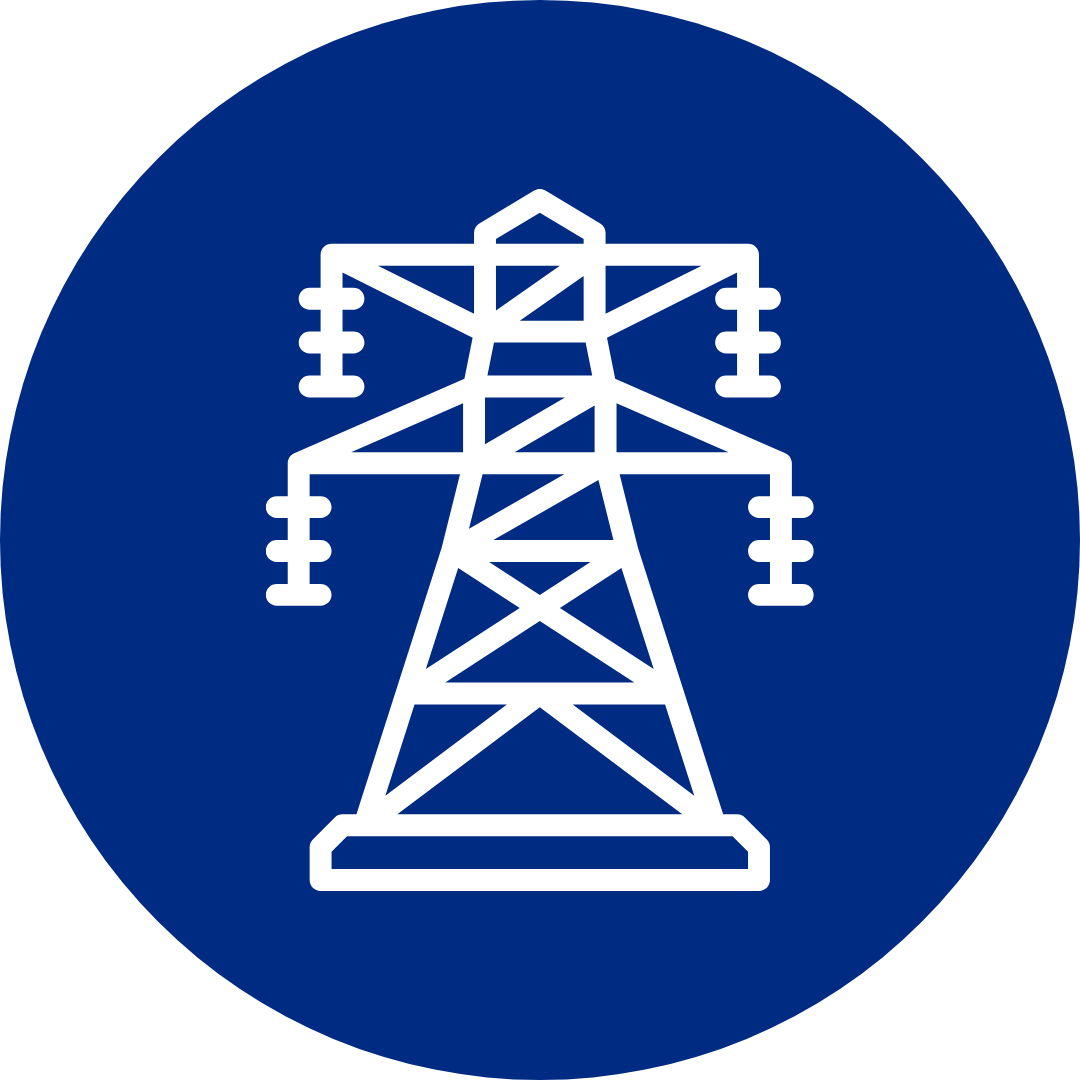Choosing the right outdoor Ethernet cable makes the difference between a network that runs smoothly and one that fails after the first storm. The best cable for outdoor use is one that matches the environment, speed needs, and installation method. Not every cable can handle sunlight, moisture, or underground pressure, so selecting the correct type from the start prevents costly mistakes.
Outdoor cables come in different designs, each built for a specific job. Some resist UV rays for surface runs, while others include gel filling to block water underground. Shielding may also be necessary in areas with heavy electrical interference, but it adds cost and installation steps. Knowing these details before buying ensures reliable performance for years.
The process does not need to be complicated. By focusing on jacket type, shielding, and speed requirements, anyone can match the right cable to the task. This practical approach avoids trial and error and keeps the network stable in all weather conditions.
Key Takeaways
Outdoor cables must match environment, speed, and installation method
Jacket type, shielding, and material quality decide long-term reliability
Planning ahead prevents failures and reduces replacement costs
Key Things to Know Before Buying
Outdoor Ethernet cables face harsher conditions than indoor ones. Buyers should check if the cable is UV-resistant, waterproof, and built with a jacket designed for outdoor use. Without these features, the cable may crack, absorb moisture, or fail quickly.
The type of installation matters. Surface-mounted or aerial runs need cables with strong jackets, and in some cases, a messenger wire to support long spans. Direct burial cables are designed for underground use, and gel-filled options protect better in damp or wet soil.
Bandwidth is another key factor. Cat5e supports up to 2.5 Gbps, Cat6 up to 5 Gbps, and Cat6A up to 10 Gbps. Choosing based on current and future speed needs prevents unnecessary upgrades later.
Electrical noise can affect performance. Near power lines or machinery, a shielded cable (STP) reduces interference. In quieter areas, an unshielded cable (UTP) is usually easier to install and less costly.
A quick comparison helps when deciding:
Cable Type | Best Use | Max Bandwidth | Key Feature |
Cat5e Outdoor | Budget runs | 2.5 Gbps | UV jacket |
Cat6 Outdoor | General use | 5 Gbps | Better performance |
Cat6A Direct Burial | High-speed underground | 10 Gbps | Future-proof |
Finally, buyers should confirm local regulations for burial depth and consider using conduit for added protection, even when not required. This extends the life of the cable and makes replacement easier.
Outdoor Ethernet Cable Checklist
Before installing an outdoor Ethernet cable, it helps to review a few key points. This ensures the cable will last and provide a stable connection in different conditions.
Weather Resistance
Check that the cable is labelled outdoor-rated or CMX. These options are built to resist UV rays, moisture, and temperature changes. Standard indoor cables will not hold up outside.
Installation Method
Decide if the cable will be buried or run above ground. Direct burial cables are designed to go underground without extra protection, while above-ground runs may need support or conduit.
Cable Type and Speed
Match the cable category to the network needs.
Cat5e: up to 1 Gbps, fine for basic home use.
Cat6: up to 10 Gbps over short runs, better for multiple devices.
Cat6a: higher performance for longer distances.
Protection from Interference
Look for cables with shielding if the area has many electrical devices. Shielding helps prevent signal loss and keeps the connection stable.
Grounding and Safety
Grounding is important when cables are exposed to storms or power surges. This reduces the risk of damage to equipment.
Feature | What to Check For |
Jacket Material | UV-resistant, waterproof, durable outer layer |
Burial Use | Direct burial rating if placing underground |
Speed Requirements | Cat5e, Cat6, or Cat6a depending on use |
Extra Protection | Shielding, conduit, or grounding as needed |
Explaining the Basics
Ethernet cables carry data between devices, and the type chosen affects both performance and durability. Indoor cables are not built to handle outdoor conditions, so using the correct outdoor-rated option is essential.
Outdoor Ethernet cables usually have a UV-resistant and waterproof jacket. This protects them from sunlight, rain, and temperature changes. Without this protection, cables can crack, absorb moisture, or fail over time.
There are two main categories to know:
Standard outdoor-rated cable – designed for open-air use, resistant to weather and UV.
Direct burial cable – made to go underground without extra conduit, often with added water-blocking materials.
A quick comparison:
Cable Type | Key Feature | Typical Use Case |
Outdoor-rated (CMX) | UV and moisture resistance | Along walls, fences, or soffits |
Direct burial | Extra protection against water | Underground runs without conduit |
Shielding is another factor. Shielded Ethernet cables help reduce interference and static build-up, which is useful if the cable runs near power lines or is suspended in the air. Unshielded cables may be fine for short ground runs where interference is minimal.
Cable category also matters. Cat5e supports gigabit speeds, while Cat6 and Cat6A provide higher bandwidth and better future-proofing. The choice depends on distance, speed needs, and budget.
By understanding jackets, shielding, and categories, users can match the right Ethernet cable to their outdoor environment and installation method.
What Makes a Cable Suitable for Outdoors
An outdoor Ethernet cable must withstand conditions that standard indoor cables cannot. Rain, snow, sunlight, and temperature swings all affect performance if the cable is not built for external use.
The most important factor is the outer jacket. Outdoor-rated cables often use CMX or polyethylene (PE) jackets, which resist UV rays, moisture, and physical wear. This prevents cracking and signal loss over time.
Shielding also plays a role. In areas with heavy electrical interference, a Shielded Twisted Pair (STP) cable helps maintain a stable connection. In quieter environments, Unshielded Twisted Pair (UTP) may be enough and is usually more affordable.
Moisture protection is essential. Some outdoor network cables include waterproof tape or gel to block water from entering the cable. This feature is especially useful for direct burial installations.
Below is a quick comparison of common features:
Feature | Why It Matters | Example Use Case |
UV-resistant jacket | Stops sun damage | Cable on walls or poles |
Waterproofing | Prevents moisture intrusion | Underground or wet areas |
Shielding (STP) | Reduces interference | Near power lines or equipment |
Pure copper conductors | Stronger signal, less loss | Long-distance outdoor runs |
Outdoor cables also need flexibility in installation. Some come in pull boxes or spools to make handling easier, especially when routing through conduit or burying underground.
By combining weatherproofing, shielding, and durable materials, an outdoor-rated cable ensures a reliable connection in demanding environments.
Solid Copper vs CCA: Which to Choose for Reliability
When comparing Ethernet cables, the main distinction lies between solid copper and copper-clad aluminium (CCA) conductors. While both may look the same on the outside, their performance and compliance with standards differ greatly.
Solid copper cables use pure copper conductors. This provides lower resistance, better conductivity, and higher durability. They are approved for Ethernet use under recognised industry standards and support features like Power over Ethernet (PoE) without risk of overheating.
CCA cables use aluminium with a thin copper coating. They are lighter and cheaper, but the higher resistance of aluminium leads to more signal loss and weaker performance. They often fail certification tests for Ethernet use and are not permitted under many electrical and safety codes.
Key differences:
Feature | Solid Copper | CCA (Copper-Clad Aluminium) |
Conductivity | High | Lower |
Standards Compliance | Meets TIA/NEC | Not compliant |
PoE Support | Reliable | Risk of overheating |
Cost | Higher upfront | Lower upfront |
Long-Term Reliability | Strong | Weak |
Installers often avoid CCA because it can cause voltage drop, device damage, or even fire hazards in high-power applications. Even if allowed for purchase, using it in Ethernet runs may result in failed inspections or costly replacements later.
For anyone needing reliable connectivity outdoors, the choice of conductor material directly affects performance, safety, and compliance.
Do You Need Shielded Cable Outside?
Shielded Ethernet cable can reduce electromagnetic interference (EMI) from nearby power lines, lights, or heavy equipment. This shielding creates a barrier that helps maintain signal quality when electrical noise is present.
In a quiet residential setting, such as a garden or small yard, unshielded cable is often enough. It costs less, installs more easily, and does not require grounding.
However, in areas with high EMI, shielded cable becomes useful. For example, running cable near outdoor lighting, motors, or overhead power lines can introduce interference that disrupts data transfer.
Key differences between shielded and unshielded cable:
Feature | Shielded (STP) | Unshielded (UTP) |
EMI protection | Strong resistance | Minimal protection |
Cost | Higher | Lower |
Installation | Requires grounding, more complex | Easier, no grounding needed |
Best use case | High interference areas | Low interference, residential setups |
Shielded outdoor cable also adds durability in demanding environments. Yet, if not grounded correctly, it may cause more problems than it solves.
For most home outdoor runs, unshielded outdoor-rated Cat5e or Cat6 is sufficient. Businesses or industrial sites with more electrical equipment may benefit from shielded options.
Choosing between them depends less on speed and more on the surrounding environment. The right decision balances performance, installation effort, and cost.
Picking the Right Jacket for Sun, Rain and Temperature
Choosing an outdoor jacket depends on the conditions it needs to handle. A jacket that works well in light wind may not protect against heavy rain or sudden drops in temperature. Matching the jacket to the environment keeps the wearer comfortable and prepared.
Key factors to consider include:
Waterproofing: Keeps rain out during wet conditions.
Breathability: Allows sweat to escape during activity.
Insulation: Traps warmth in cooler temperatures.
Wind resistance: Blocks cold air from passing through.
For rainy weather, a fully waterproof jacket with sealed seams is best. Breathable materials prevent overheating, especially when walking or hiking. In contrast, a water-repellent jacket may be enough for short trips where only light showers are expected.
When facing colder temperatures, insulated jackets provide warmth. Down or synthetic fills are common, but the right choice depends on weight, packability, and how damp the environment might be. Windproof layers add extra comfort in exposed areas.
In sunny conditions, lightweight jackets with UV protection help reduce sun exposure while still allowing airflow. These jackets are often thin, easy to pack, and suitable for layering when the weather changes quickly.
Condition | Recommended Jacket Style | Key Feature |
Heavy rain | Waterproof shell | Sealed seams, breathable |
Cold temperatures | Insulated jacket (down/synthetic) | Warmth retention |
Windy weather | Windproof softshell | Blocks air flow |
Sunny days | Lightweight UV-protective layer | Sun protection, ventilation |
Selecting the right jacket, like choosing a direct burial ethernet cable for outdoor use, requires attention to environment, durability, and long-term performance. Each option serves a purpose depending on the conditions faced.
Practical How-To
Selecting and installing an outdoor Ethernet cable requires careful thought about the type of cable, how it will be run, and the tools needed to do the job properly. The goal is to keep the connection reliable while protecting the cable from weather, interference, and physical damage.
Cat5e, Cat6 or Cat6a: Which is Best Outdoors?
The choice between Cat5e, Cat6, and Cat6a depends on both performance needs and installation conditions. Cat5e supports speeds up to 1 Gbps, which is often enough for streaming, web browsing, and light office use. It is also less expensive and easier to install.
Cat6 offers faster speeds, up to 10 Gbps over short distances, and better shielding against interference. This makes it more suitable for security cameras or multiple devices running at the same time. It is also more durable in outdoor-rated versions.
Cat6a is designed for higher performance over longer distances, often up to 100 metres at 10 Gbps. It comes with thicker insulation and stronger shielding, which makes it more resistant to interference but also harder to bend. For large properties or demanding networks, Cat6a is often worth the investment.
Cable Type | Max Speed | Max Distance at Max Speed | Best Use Case Outdoors |
Cat5e | 1 Gbps | 100 m | Simple home use, Wi-Fi extension |
Cat6 | 10 Gbps | 55 m (10 Gbps), 100 m (1 Gbps) | Security cameras, multiple devices |
Cat6a | 10 Gbps | 100 m | Large setups, high-performance needs |
Can You Bury Ethernet Cable, or Should You Use Conduit?
Outdoor Ethernet cables come in two main types: direct burial and conduit-protected. Direct burial cables are built with tough jackets that resist moisture, soil pressure, and temperature changes. They can be placed directly in the ground without extra protection.
Conduit provides an added layer of defence. It shields the cable from rodents, garden tools, and shifting soil. It also makes replacement easier in the future, since the cable can be pulled out without digging again.
When burying, a trench at least 30 cm deep is recommended for safety. In areas with heavy foot traffic or vehicle use, deeper trenches and conduit are strongly advised. For short runs in protected areas, direct burial may be sufficient, but conduit is the safer long-term option.
How to Route Outdoor Cables Safely
Routing outdoor cables requires planning to avoid damage and interference. Cables should not be run along the ground surface where they can be tripped over or cut by lawn equipment. Instead, they should be buried, placed in conduit, or securely fastened along walls or fences.
Avoid running Ethernet cables parallel to power lines. Electrical cables can cause interference, reducing network performance. If crossing is unavoidable, cross at a 90-degree angle to reduce signal disruption.
When attaching cables to structures, use UV-resistant cable ties or clamps. Standard ties may become brittle in sunlight and break. Keeping the cable firmly in place reduces stress on the connectors and prevents sagging.
Getting the Cable Indoors Without Leaks
Bringing an outdoor cable into the house must be done carefully to prevent water entry. The most common method is to drill a small hole through a wall, then feed the cable through a weatherproof grommet or cable entry plate.
Seal the entry point with silicone caulk or expanding foam. This stops rain, insects, and draughts from entering. Always slope the hole slightly downward toward the outside so water cannot run inside along the cable.
If possible, bring the cable through a basement wall, crawl space, or utility entry point where other services already pass through. This reduces the number of new holes needed and keeps everything neat.
Simple Tools to Make the Job Easier
A few basic tools can make outdoor cable installation faster and cleaner. A trenching shovel or narrow spade is useful for burying cables. For conduit runs, a fish tape or pulling rod helps guide the cable through long sections.
Cable cutters and crimping tools are essential if the cable needs custom lengths or new connectors. A weatherproof junction box may also be helpful for protecting connections outside.
Using the right tools reduces mistakes and keeps the cable intact. For example, cutting with the wrong tool can damage the shielding, leading to poor performance. Investing in proper tools saves time and avoids repeat work.
How to Test Your Cable Before You Finish
Testing the cable before sealing trenches or closing walls ensures the connection works as expected. A simple Ethernet cable tester checks for wiring faults, such as crossed pairs or broken connections.
Once connected, running a speed test on a computer confirms the cable supports the intended bandwidth. Testing should be done at both ends of the cable to confirm stability.
If the cable is buried or in conduit, test before backfilling. Fixing a problem after everything is sealed is far more difficult. Taking a few minutes to test early prevents wasted effort and ensures the network is reliable from the start.
Safety & Protection
Outdoor network cables face risks beyond weather exposure. Electrical surges, lightning strikes, and interference can cause serious damage or downtime. In some cases, fibre optic cabling provides a safer alternative where copper may not be the best choice.
Protecting Against Surges and Lightning
Ethernet cables made of copper can act as conductors for electrical surges. These surges may come from nearby lightning strikes or power fluctuations. Without proper protection, connected devices such as routers, switches, or cameras can be damaged.
The most effective safeguard is to use surge protectors or Ethernet surge suppressors at both ends of the cable. These devices absorb excess voltage and prevent it from reaching sensitive equipment. In addition, grounding outdoor equipment properly reduces the risk of damage.
Running the cable through conduit offers extra protection. Conduit shields the cable from physical wear and helps reduce exposure to sudden electrical discharge. For aerial installations, keeping cables away from power lines is also critical.
A simple checklist for copper cable protection:
Use outdoor-rated surge protectors.
Ground all external equipment.
Keep data cables separate from electrical wiring.
Install conduit where possible.
These steps lower the chance of costly failures and keep the network stable.
When Fibre Might Be the Better Option
Unlike copper, fibre optic cables do not conduct electricity. This makes them immune to lightning-related surges and electromagnetic interference. For installations in high-risk areas, fibre can provide a safer and more reliable option.
Fibre also supports longer distances without signal loss. This is useful when connecting separate buildings or running cables across open spaces. In these cases, fibre avoids the grounding and surge protection requirements that copper demands.
However, fibre is usually more expensive to purchase and install. It also requires specialised tools and connectors. For smaller projects, this may not be cost-effective.
Still, in environments with frequent storms or heavy electrical interference, fibre is often the better long-term choice. It reduces maintenance needs and lowers the risk of equipment damage.
Frequently Asked Questions
Outdoor Ethernet cables must be chosen with care, as factors like weather resistance, shielding, and performance standards affect reliability. Cable categories such as Cat5e, Cat6, Cat6a, and Cat8 each serve different needs depending on speed, distance, and installation environment.
What type of Ethernet cable is needed for outdoor use?
An outdoor-rated Ethernet cable, often labelled CMX, is designed to handle sunlight, rain, and temperature changes. For underground runs, a direct burial cable is best because it resists moisture and pressure without extra conduit. Shielded Cat6 or Cat6a cables are also common for outdoor use where interference is a concern.
Is Cat 8 overkill for home use?
Yes, in most cases Cat8 is unnecessary for home networks. Cat8 supports extremely high speeds over short distances, but most households do not have equipment or internet service that can take advantage of it. It is mainly used in data centres.
How do I know which Ethernet cable to get?
The choice depends on speed needs, distance, and environment. For basic internet and streaming, Cat5e is usually enough. For faster speeds and future-proofing, Cat6 or Cat6a is recommended. If the cable will be outside, ensure it is outdoor-rated or direct burial.
Is Cat6 overkill for home use?
Cat6 is not overkill for most homes. It supports up to 10 Gbps over short distances and provides better shielding than Cat5e. Even if current internet plans do not reach those speeds, Cat6 offers flexibility for future upgrades.
Should I run a Cat6 or 8 in my house?
Cat6 is a practical choice for most households, balancing cost and performance. Cat8 is far more expensive and designed for short connections in server rooms. Unless the home requires very high-speed local transfers, Cat6 or Cat6a is the better option.
Will a Cat7 or Cat6 help my internet speed?
Ethernet cable categories do not increase the speed provided by the internet service. However, higher-rated cables like Cat6 or Cat7 can reduce interference and support faster local network speeds. This matters when transferring files between devices on the same network.
How long can an Ethernet cable be without losing speed?
For Cat5e and Cat6, the maximum recommended length is 100 metres (about 328 feet). Beyond this, signal loss and reduced speed can occur. For very long runs, using switches or repeaters helps maintain performance.
Alarm Cable
Arctic Grade Cable
Armoured Cable
Audio & Speaker Cable
Auto Cable
Bare Copper
Belden Equivalent Cable
Co-axial Cable
Data Cable
DC Telecom Cable
Defence Standard Cable
Emergency Lighting & Fire Detection Cable
EV Cable
Festoon
![Loose Tube Fibre Cross Section]()
Fixed Wiring PVC & LSOH Cable
Flatform
Flexible Control Cable
Flexible PVC Cable
Flexible Rubber Cable
General Wiring Cable PVC & LSOH
High Temperature Cable
High Voltage Cable
![5308 p1 t2 cat Cross Section]()
LSOH Flexible Cable
Medium Voltage Cable
NYY & N2XH Cable
Protected Wiring Cable
Silicone Cable
Solar Cable
Split Concentric Cable
Spiral Cable
Temporary Power Cable
Tri-Rated Cable
Welding Cable
Alarm Cable
Arctic Grade Cable
Armoured Cable
Audio & Speaker Cable
Auto Cable
Bare Copper
Belden Equivalent Cable
Co-axial Cable
Data Cable
DC Telecom Cable
Defence Standard Cable
Emergency Lighting & Fire Detection Cable
EV Cable
Festoon
![Loose Tube Fibre Cross Section]()
Fixed Wiring PVC & LSOH Cable
Flatform
Flexible Control Cable
Flexible PVC Cable
Flexible Rubber Cable
General Wiring Cable PVC & LSOH
High Temperature Cable
High Voltage Cable
![5308 p1 t2 cat Cross Section]()
LSOH Flexible Cable
Medium Voltage Cable
NYY & N2XH Cable
PAS - BS5308 Instrumentation Cable
Protected Wiring Cable
RS-232 Cable
RS-485 Cable
Silicone Cable
Solar Cable
Split Concentric Cable
Spiral Cable
Telephone Cable
Traffic Signal Cables
Temporary Power Cable
Tri-Rated Cable
Welding Cable
Airports
Automation & Process Control
![Automotive]()
Building & Construction
Communication & Telecommunication
Data Centres
Defence
![DNO 1]()
E-Mobility
Food & Beverage
Marine & Offshore
Mining, Drilling & Tunnelling
OEMs
Oil, Gas & Petrochemical
Rail & Metro
Renewable Energy
Switchgear
Power
Water Treatment













































